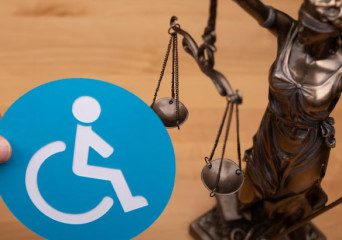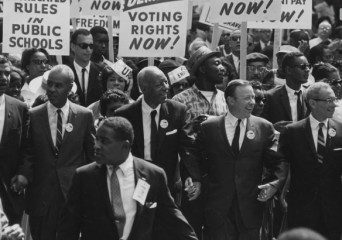
Table Of Contents
- Different Types Of Discrimination
- Racial Discrimination
- Gender Discrimination
- Age Discrimination
- Disability Discrimination
- Religious Discrimination
- Sexual Orientation Discrimination
- National Origin Discrimination
- Socioeconomic Discrimination
- Language Discrimination
- Appearance Discrimination
- Types Of Discrimination In The Workplace
- Age Discrimination: The Battle Against Ageism
- Gender Discrimination: Shattering the Glass Ceiling
- Racial Discrimination: Equity for All
- Sexual Orientation Discrimination: Embracing LGBTQ+ Colleagues
- Religious Discrimination: Faith and Work
- Disability Discrimination: Equal Access for All
- Pregnancy Discrimination: Supporting Working Parents
- National Origin Discrimination: Valuing Diversity
- Pay Discrimination: Bridging the Wage Gap
- Retaliation: Silencing Whistleblowers
- Which Of The Following Types Of Discrimination Would Be Subject To The Rational Basis Test?
- The Rational Basis Test: Unpacking the Basics
- Types of Discrimination Subject to the Rational Basis Test
- Age Discrimination: A Rational Connection
- Disability Discrimination: Balancing Interests
- National Origin Discrimination: Balancing National and Local Interests
- Why The Rational Basis Test?
- Frequently Asked Questions (FAQs)
- Final Thoughts
A Comprehensive Guide To Types Of Discrimination In The US
Discrimination can turn out to be a fully demoralizing factor that most individuals refer to each day. Discrimination is a real and sad vice that has been experienced by many Americans from day to day existence in various works of life.
Based on the following headings, this paper will examine various kinds of discrimination that are often witnessed in the United States of America.
Different Types Of Discrimination

Discrimination, however it is sad to say, remains an ongoing problem in our world. It embraces many bureaucracy, in one way or the other, addressing individuals in multiple ways. To begin this communication, I think it might be helpful to open up the specific types of discrimination that are considered exceptional to look at various faces of injustice with a slightly brighter light.
Racial Discrimination

Racial discrimination is one we regularly pay attention to. It’s discrimination primarily based on someone’s race or ethnicity. This can appear in many methods, from diffused biases to overt acts of racism. It’s the motive why we’ve got moves like Black Lives Matter and why the fight for racial equality persists.
Gender Discrimination

Gender discrimination targets individuals based on their gender or gender identity. This includes not handiest the pay hole between men and women but additionally prejudices in opposition to transgender and non-binary people. It’s the pressure at the back of the #MeToo motion and the combat for LGBTQ+ rights.
Age Discrimination
Age discrimination unfairly treats humans otherwise primarily based on their age. It’s frequently related to older adults going through challenges within the task market, but it may have an effect on the younger, too. Think of the stereotypes that younger humans face – regularly visible as inexperienced or entitled.
Disability Discrimination

Disability discrimination takes place when people with disabilities are unfairly dealt with or denied the right of entry to services, employment, or opportunities. It’s because we’ve got legal guidelines like the Americans with Disabilities Act (ADA) to ensure equal entry for all.
Religious Discrimination

Religious discrimination entails prejudice against someone’s religion or beliefs. It can occur as workplace discrimination or even hate crimes towards particular religious organizations. Freedom of faith is a fundamental proper, and discrimination in this content material is a breach of that right.
Sexual Orientation Discrimination

Sexual orientation discrimination targets people primarily based on their sexual orientation. This includes discrimination in opposition to LGBTQ+ people. Progress has been made, however there’s nonetheless paintings to do to make sure that love is love, irrespective of who you are.
National Origin Discrimination
National foundation discrimination happens whilst someone is handled unfairly because of their usa of starting place or ethnicity. It’s crucial to embrace our nation’s diversity and avoid biases that stem from stereotypes.
Socioeconomic Discrimination

Socioeconomic discrimination is based on a person’s social and monetary popularity. It’s often less seen however just as dangerous. It can take place in unequal access to education, employment, and healthcare.
Language Discrimination

Language discrimination targets people based on their language or accent. It’s a barrier that may save you humans from having access to possibilities and offerings really due to the manner they communicate.
Appearance Discrimination

Appearance discrimination is often primarily based on superficial judgments about someone’s appearance. It’s commonplace in settings like task interviews, wherein appearance biases can have an effect on hiring decisions.
Further, discrimination wears many masks, but it’s as much as us to understand and confront it in all its forms. Our society is strongest whilst it values and respects the variations amongst us in preference to the use of them as a foundation for injustice. It’s a collective effort to dismantle discrimination, one communication at a time.
Types Of Discrimination In The Workplace

The workplace should be a haven of equality and fairness, but sadly, discrimination can rear its ugly head there, too. Let’s dive into the various types of discrimination that can occur in the professional realm, shedding light on these issues.
Age Discrimination: The Battle Against Ageism
Age discrimination occurs when someone is treated unfairly in the workplace because of their age. Younger employees might face assumptions of inexperience, while older colleagues may be subjected to stereotypes about being outdated or less capable.
Gender Discrimination: Shattering the Glass Ceiling

Gender discrimination is all too familiar and includes unequal pay, promotion biases, and stereotypes about what men and women can or should do at work. It’s the reason behind those conversations about breaking the glass ceiling for women in leadership roles.
Racial Discrimination: Equity for All
Racial discrimination involves treating employees differently based on their race or ethnicity. Microaggressions, racial bias, and even overt racism can all rear their heads in the workplace, making it essential to promote diversity, equity, and inclusion.
Sexual Orientation Discrimination: Embracing LGBTQ+ Colleagues
Discrimination based on sexual orientation targets LGBTQ+ employees. This can manifest as bias in hiring, unfair treatment, or harassment. Acceptance and support for LGBTQ+ colleagues create a more inclusive workplace.
Religious Discrimination: Faith and Work
Religious discrimination occurs when someone is treated unfairly due to their religious beliefs. It can involve dress code conflicts, scheduling conflicts, or bias against certain religious practices. Respecting religious diversity is crucial in the workplace.
Disability Discrimination: Equal Access for All
Disability discrimination involves treating employees unfairly due to their disabilities. This can take many forms, from physical inaccessibility to biased attitudes. Ensuring equal access and accommodations is essential.
Pregnancy Discrimination: Supporting Working Parents
Pregnancy discrimination is the unfair treatment of employees who are pregnant or have recently given birth. It can involve demotions, dismissals, or denial of promotions. Creating a supportive environment for working parents is vital.
National Origin Discrimination: Valuing Diversity
National origin discrimination is when someone faces unfair treatment based on their country of origin or ethnicity. It can manifest as stereotyping, bias, or exclusion. A diverse and inclusive workplace celebrates these differences.
Pay Discrimination: Bridging the Wage Gap
Pay discrimination occurs when employees are paid differently for performing substantially similar work, often based on gender, race, or other factors. Achieving pay equity is an ongoing struggle.
Retaliation: Silencing Whistleblowers
Retaliation happens when employees who report discrimination or harassment face negative consequences for speaking up. A culture that encourages reporting and protects whistleblowers is essential.
In conclusion, workplace discrimination is a pervasive issue that can take various forms. Promoting diversity, equity, and inclusion while educating employees about their rights is vital. It’s a collective effort to create workplaces where everyone feels valued, respected, and treated fairly, regardless of their background or identity
Which Of The Following Types Of Discrimination Would Be Subject To The Rational Basis Test?

Discrimination can rear its ugly head in various ways, but not all types of discrimination are treated equally under the law. Some fall under the “Rational Basis Test.” In this conversation, let’s explore which types of discrimination are subject to this test and why in an engaging and conversational tone.
The Rational Basis Test: Unpacking the Basics
Before we dive into the specific types of discrimination, let’s understand the Rational Basis Test itself. It’s a legal principle used to evaluate whether a government law or action is constitutional. To pass this test, the law must have a rational connection to a legitimate government interest.
Types of Discrimination Subject to the Rational Basis Test
Age Discrimination: A Rational Connection
Age discrimination, as it relates to employment, is typically subject to the Rational Basis Test. The rationale behind this is that while age discrimination is harmful, it doesn’t receive the same level of scrutiny as discrimination based on characteristics like race or gender. Laws that regulate age discrimination aim to balance the interests of both older and younger workers, and they must have a rational basis for doing so.
Disability Discrimination: Balancing Interests
Disability discrimination, particularly in the context of employment, is also subject to the Rational Basis Test. Laws in this area must strike a balance between the rights of individuals with disabilities and the legitimate interests of employers in running their businesses efficiently.
National Origin Discrimination: Balancing National and Local Interests

National origin discrimination cases are generally subject to the Rational Basis Test. In these cases, laws must demonstrate a rational connection between the regulation and a legitimate government interest, such as national security or public safety. The government’s interests in immigration and national security often play a role in these evaluations.
Why The Rational Basis Test?
So, why are these types of discrimination subject to the Rational Basis Test? The rationale is rooted in the principle that not all types of discrimination are equally harmful or have the same societal impact. Discrimination based on certain characteristics, like race or gender, has historically been deemed more harmful and deserving of stricter scrutiny.
The Rational Basis Test is a way to acknowledge that discrimination is a complex issue, and government actions may have legitimate reasons to regulate it in specific ways. It aims to strike a balance between protecting individual rights and the government’s interest in pursuing policies for the greater good.
In conclusion, while discrimination is a deeply concerning issue, the law applies different standards to various types of discrimination. The Rational Basis Test is one way the legal system navigates these complexities, considering the unique factors and interests at play in different discrimination cases. It’s an ongoing conversation in the quest for a more just and equitable society.
Frequently Asked Questions (FAQs)
Here are some of the frequently asked questions regarding the kinds of discrimination faced by US citizens in the nation:
Discrimination is when someone is treated unfairly or differently based on specific characteristics, such as race, gender, age, disability, religion, or sexual orientation. It can manifest in various ways, including biased treatment, unequal opportunities, or harassment.
The most common types of discrimination include racial discrimination, gender discrimination, age discrimination, disability discrimination, religious discrimination, and discrimination based on sexual orientation or gender identity. These forms of discrimination can occur in workplaces, communities, and many other areas of life.
No, not all types of discrimination are treated equally under the law. Some forms of discrimination receive stricter scrutiny and protection due to historical and societal factors. For example, discrimination based on race, gender, and certain other characteristics typically receives heightened legal scrutiny.
The legal system addresses discrimination through various federal and state laws, such as the Civil Rights Act of 1964, the Americans with Disabilities Act, and the Age Discrimination in Employment Act. These laws prohibit discrimination in various contexts, including employment, education, housing, and public accommodations.
Direct discrimination occurs when someone is treated unfairly because of their protected characteristics, like being fired due to their race. Indirect discrimination happens when a seemingly neutral rule or policy disproportionately affects individuals with certain characteristics. For example, a requirement that all employees must work on Saturdays might disproportionately affect employees of a specific religious faith.
Individuals can combat discrimination by raising awareness, reporting discriminatory incidents to authorities or employers, seeking legal remedies when appropriate, and supporting organizations and movements that promote equality and diversity.
Addressing discrimination is vital because it promotes fairness, social justice, and equal opportunities for all citizens. Discrimination hinders personal and societal progress, perpetuates inequalities, and divides communities. By addressing discrimination, we work toward a more inclusive and equitable society.
Allies can play a crucial role by actively supporting and advocating for individuals facing discrimination. They can educate themselves about different forms of discrimination, listen to affected individuals, and work to create inclusive environments where everyone feels valued and respected.
Progress has been made in the fight against discrimination, but challenges persist. Many individuals and organizations continue to work toward greater equality and inclusivity, and legal protections against discrimination have expanded over the years. However, ongoing efforts are necessary to address deep-seated inequalities and create lasting change.
Final Thoughts
In conclusion, discrimination is a complex issue that affects many aspects of society. By addressing common questions and fostering open conversations, we can raise awareness, promote equality, and work together to combat discrimination in all its forms.
I hope you have found this article helpful and informative. And do share your opinion regarding the ways employers can reduce workplace discrimination in their organizations.
Read Also:









